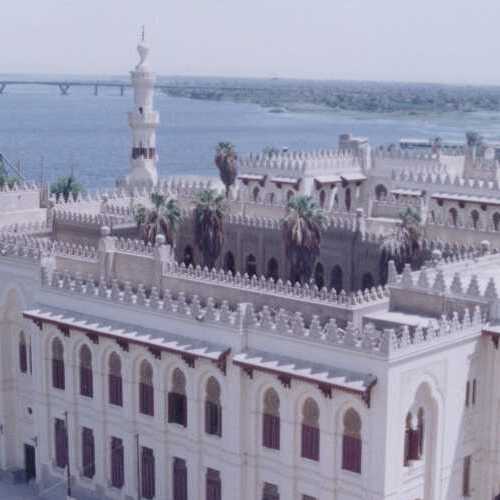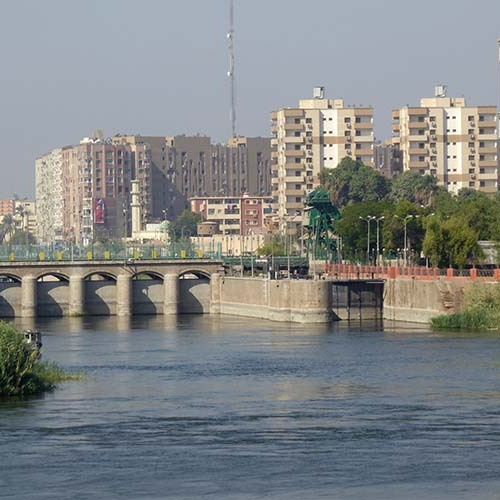Introduction
Nestled in the cliffs of Asyut, a bustling city along the Nile, lies the Tomb of Khety II
— a remarkable archaeological gem that offers a glimpse into ancient Egypt’s turbulent yet fascinating
First Intermediate Period. This tomb, which dates back to the 10th Dynasty, belongs to Khety
II, a powerful nomarch (governor) of the 13th Upper Egyptian nome who served under King
Merikare of Herakleopolis.
Historical Background: Khety II and His Role
Khety II governed during the 10th Dynasty, a time when Egypt was divided between rival dynasties in
Herakleopolis (north) and Thebes (south). As the ruler of Asyut, Khety II was a loyal ally of
Herakleopolis and played a crucial role in defending the region from the advancing Theban forces. His
autobiographical inscriptions recount how he was driven out of Asyut by the Thebans but later, with the
support of King Merikare, reclaimed the city.
The Architecture and Layout of the Tomb
The Tomb of Khety II (also known as Tomb IV, N12.2) lies between the tomb of his
presumed father, Iti-ibi (Tomb III, N12.1), and that of Khety I (Tomb V, M11.1). Built into the
limestone cliffs of Asyut, the tomb was constructed using layer 6 of the mountain, where the stone was
of the highest quality.
Key Architectural Features:
- Large Hall: Measuring 18.80 m in length, 10.10 m in width, and 3.90 m in height,
the tomb’s central hall is supported by two pairs of rock-cut pillars. - Incomplete Construction: The tomb was never fully completed. While the front part
of the hall was smoothed and decorated, the middle section was left unfinished. - Burial Shafts: Two previously unknown shafts were uncovered during the 2004–2005
excavation seasons.
Intricate Decorations and Inscriptions
The north wall of the tomb features a long autobiographical inscription in incised
hieroglyphs filled with blue paint. This text highlights Khety’s military campaigns, his relationship
with King Merikare, and his efforts to restore order in Asyut.
Notable Scenes:
- Marching Soldiers: The south wall features three rows of soldiers armed with
battle-axes and shields, symbolizing Khety’s military campaigns. - Religious Motifs: Friezes of the hkr pattern adorn the tops of many walls.
New Discoveries: Insights from Recent Excavations
Excavations by the Asyut Project during the 2004 and 2005 seasons uncovered significant findings,
including:
Burial Shafts and Chambers:
These shafts yielded pottery, fragments of wooden models, and bricks consistent with the First
Intermediate Period and the Middle Kingdom. The shafts were plundered in antiquity but were later reused
for burials.
Artifacts from Multiple Periods:
- A wooden feather crown and a copper blade from Shaft 1.
- A headless wooden ushebti painted yellow and inscribed in black from Shaft 2.
- Fragments of Coptic and Islamic pottery, including glazed pottery with black patterns.
Political Intrigue: The Struggles Between Herakleopolis and Thebes
Khety II’s inscriptions vividly narrate the struggles between Herakleopolis and Thebes.
Khety was briefly exiled but returned to Asyut with the support of King Merikare. His successful defense
of Asyut was a moment of triumph, but the eventual rise of the Thebans led to the fall of
Herakleopolitan influence.
Legacy and Significance of the Tomb
The Tomb of Khety II is not just an architectural marvel — it is a living document of
Egypt’s First Intermediate Period. It reflects the intricate power struggles, the resilience of local
rulers, and the evolution of burial practices through different epochs.
Visiting Khety’s Tomb: A Must-See for History Enthusiasts
For those exploring Egypt’s ancient wonders, a visit to Asyut’s necropolis offers an
off-the-beaten-path adventure. The tomb of Khety II, with its vivid inscriptions, architectural marvels,
and echoes of political intrigue, promises a captivating journey through the ages.
Insider Tip: Asyut’s tombs are often overshadowed by the grandeur of Luxor and Giza, but
they offer a more intimate, less crowded glimpse into Egypt’s ancient past. Don’t miss the chance to
explore this hidden treasure!



